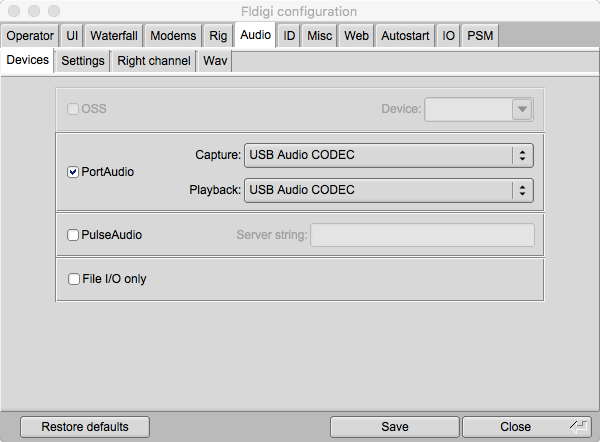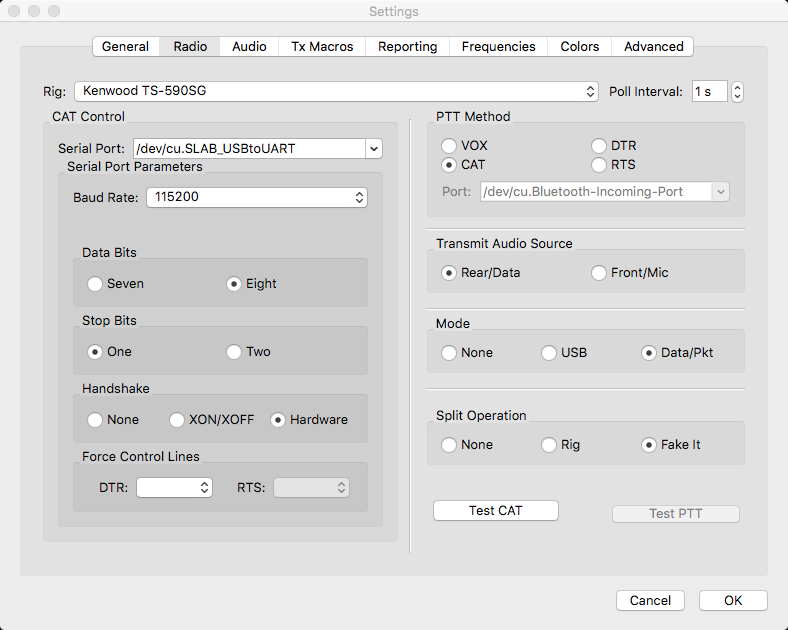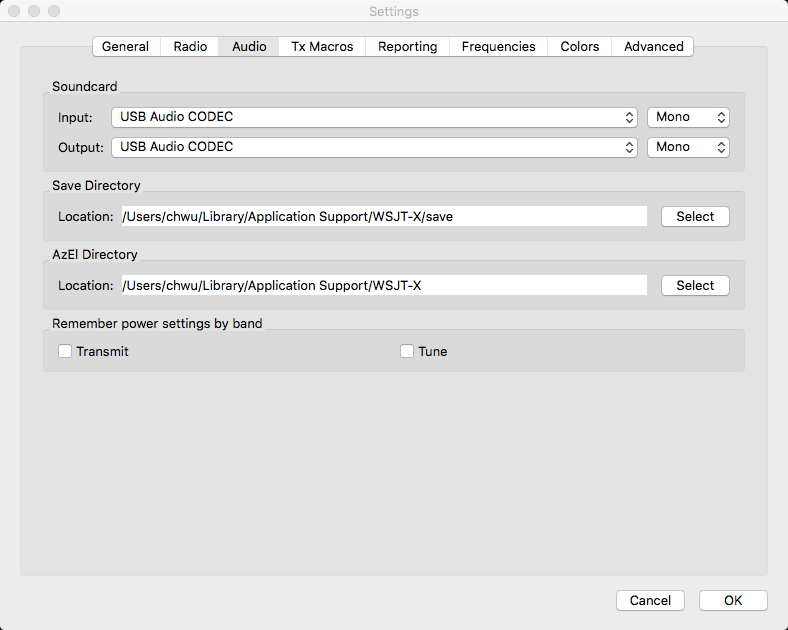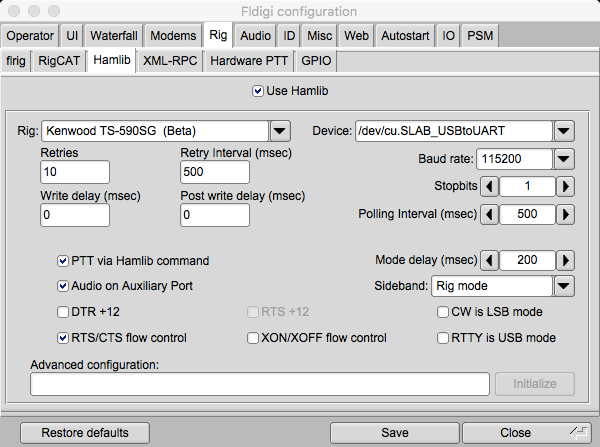
Use "PTT via hamlib" (this means: use CAT commands for PTT) and check "Audio on auxiliary" (this means: use TX1 rather than TX0 command).
Of course, make sure that the rig is powered up and connected via USB before starting the FLDIGI program!
Note: This is fldigi linked with the latest version of Hamlib, that supports the TS590SG. If you use a precompiled fldigi program from the internet, than you might not find the TS590SG in the "Rig:" list (only the TS590S).
Since different Kenwood models return different ID numbers and this is checked within hamlib, this might not work if you have the lastest rig brand but not the latest software. However, you are not lost in this case but can use RigCAT (this is more forgiving).
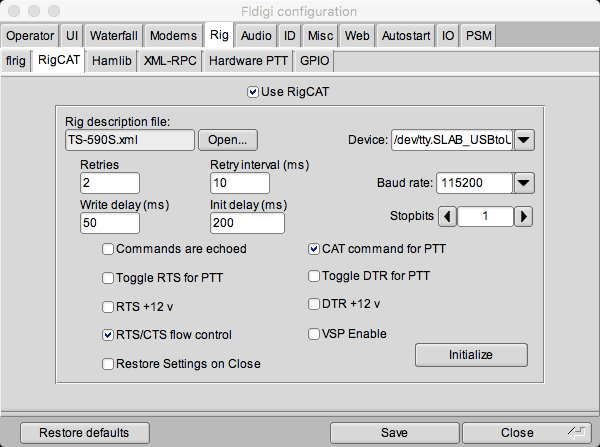
Note that you will, in addition, need the file TS-590S.xml. This one you can find on the internet. This one also works for the TS590SG.
The distinct advantage of RigCat is, that you can edit the xml file according to your needs. It is, e.g., important to use the "TX1" CAT command instead of "TX" or "TX0", otherwise audio is not accepted from the internal USB sound card but rather from the Microphone jacket.
Note: I prefer Hamlib over RigCAT. However, if your TRX is not supported by hamlib, there is little you can do (other than writing a new backend and contributing it to hamlib, hi).
With RigCAT, it is relatively straightforward to create a (or modify an existing) xml file that works with your rig.
